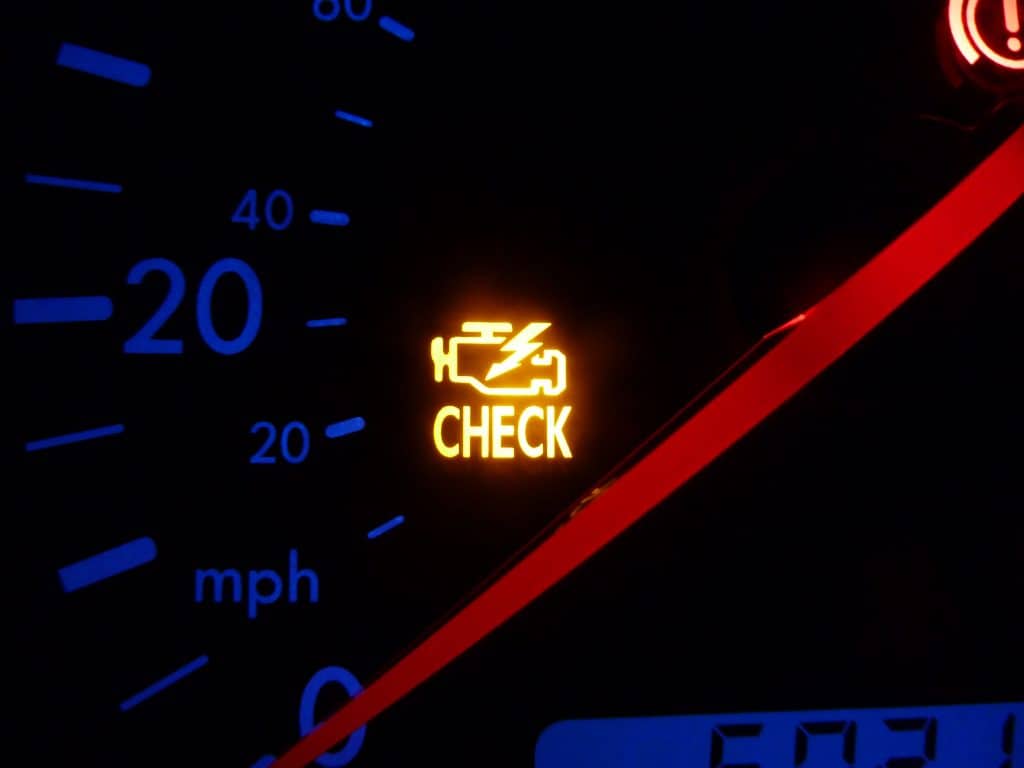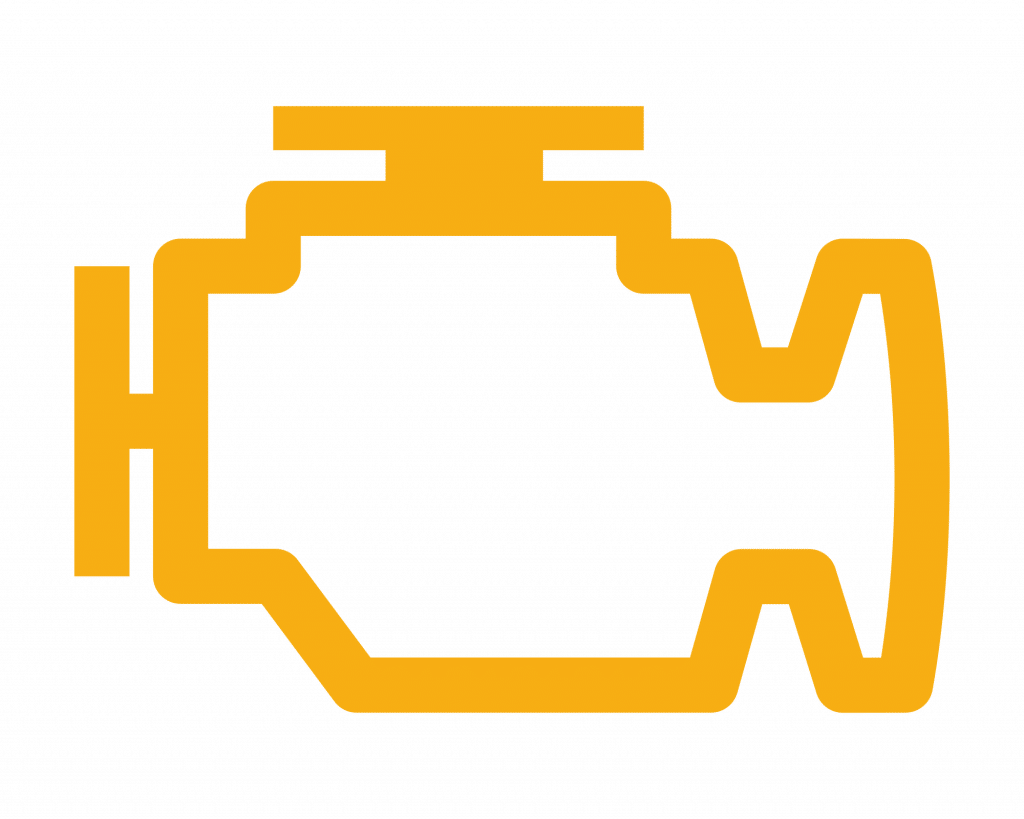
We have all faced that dreaded feeling of queasiness in our stomachs when the Check Engine Mult-ifunction Indicator Lamp (MIL) illuminates, followed by numerous puzzling questions:
Why is my Check Engine light blinking?
How much money am I going to fork over this week for repair bills?
How will I get to work?
What shop should I trust?
Should I purchase a new vehicle or keep investing in this money pit?
A Check Engine MIL that is illuminated and stable can indicate something as mundane as a loose gas cap or signal something as serious as a damaged solenoid valve in the transmission.
If you think that a Check Engine light is bad, imagine the feeling when you see the Check Engine light flashing while the car shakes and sputters. Don’t throw in the towel just yet.
But, know that a flashing Check Engine light indicates a more serious problem with the emissions system that Uncle Sam wants you to know about. Yet, no one knows how long can you drive with Check Engine light on except for the mechanic solving the problem.
What Does a Blinking Check Engine Light Mean?
Uncle Sam doesn’t just instruct the manufacturers to blink your Check Engine MIL because he wants to suck money out of your pockets.
In addition, to eliminating L.A. smog, his EPA arm also wants to protect you from damage to costly catalytic converters and fires.
In fact, a Check Engine light blinking usually indicates one of four things as discussed in greater detail below.
Either of these things can do serious damage to the emissions system that is at the base of the entire Check Engine MIL and On-Board Diagnostics-II (OBD-II) system that the EPA mandated by law to improve regional air quality.
The OBD-II system is a convenient method of ensuring emissions compliance in late-model automobiles by illuminating or flashing the Check Engine MIL when there is a problem.

Check out 4 serious causes of a flashing check engine light below.
1.) Misfire in an Engine Cylinder
Your vehicle is a precision piece of machinery. The engine is timed exactly to combust the maximum volume of fuel necessary to squeeze out the most efficient power range possible. It relies upon a carefully crafted learning process called “fuel mapping” to accomplish this.
Although there is a default fuel mapping available for your engine to function without too much waste, the onboard computers that manage engine performance are able to predict your driving patterns and tweak it. A fine-tuned fuel mapping program helps you achieve maximum fuel efficiency and lowered emissions.
When the timing of the injection is off or the spark is not firing properly, if at all, for any reason, the engine will misfire. A misfire is when the engine skips a beat in the combustion process. This can put stress on the balanced crankshaft and other internal surfaces.
Because it is easier to pedal with two feet, an engine limping along on half its cylinders can run slower and suffer predetonation, among other things.
A misfire may affect one cylinder or multiple cylinders. It can be sporadic or consistent.
Misfires are dangerous because they cause damage to the engine and can dump raw fuel into the catalytic converter.
The catalytic converter is a honeycomb designed chamber that is found in exhaust systems of automobiles and other combustion-engine-driven machines. It has two separate honeycomb styled reduction catalysts coated with different Platinum alloys to break down toxic gases and hydrocarbons emitted by the engine.
The catalytic converter is mounted to a downpipe that ports combustion exhaust from the head of the engine to the tailpipe.
2.) Faulty Emissions Control
Because the OBD-II system is chiefly concerned with major running issues that affect emissions, you may find that numerous components or one component in the system has failed.
These could be the coolant temperature sensors, the mass airflow sensors, air pressure sensors, air temperature sensors, oxygen sensors, variable valve control, or even modules which control and compute calculations from these devices.
The goal of the emissions system is to operate the engine at a ratio called Stoich which combines 14.7 liters of oxygen to 1 liter of fuel.
In achieving this goal, it is also important that the fuel be atomized properly by good injectors so that it mixes homogeneously within the air mixture.
3.) Faulty O2 Sensors
The O2 (oxygen) sensors are one of the chief reasons for a flashing Check Engine MIL and are worthy of their own separate section.
The oxygen sensors literally measure the amount of oxygen passing through the exhaust before and after the catalyst.
This is why oxygen sensors are generally referred to as being upstream or downstream of the catalytic converter (cat).
They work on double duty and fluctuate ever so slightly within a range of resistance to measure the quality of combustion and the efficiency of the cat in scrubbing contaminants.
The cat has to get up to operating temperatures of 500 to 600-degrees Fahrenheit to work properly and to burn off the residual contaminants in what is called a passive regeneration cycle.
The oxygen sensors will also fail to reach what is called “closed loop operation” until the engine reaches running temperature. When your engine is still cold, the quality of the exhaust simply isn’t in an allowable range to make the minute measurements needed to tweak fuel management and emissions efficiency.
Therefore, when your coolant temperature sensor has high internal resistance, it may not notify the engine control unit (ECU) that the engine is hot enough.
As a result, the engine will continue to dump fuel as if it were cold, thereby wasting gasoline. The catalytic converter can be damaged or may even catch fire.
A defective coolant temperature sensor can be difficult to diagnose because it doesn’t fail entirely but merely sends the wrong temperature over time.
4.) Aging Ignition System
Another common reason for the Check Engine MIL flashing is due to misfires from worn ignition components.
You may have brittle and cracking spark plug wires or bad ignition coils.
If you remove your spark plug wires, you should be able to test them using a multimeter to determine their internal resistance.
If it is out of factory specification, the wires may be absorbing electricity and turning it into heat like an incandescent light bulb instead of sending it to the spark plugs. Spark plugs can also suffer from eroded tips or fouling that renders them inoperational.
You will see a wide variance of what is at fault depending on the age and make of the vehicle.


